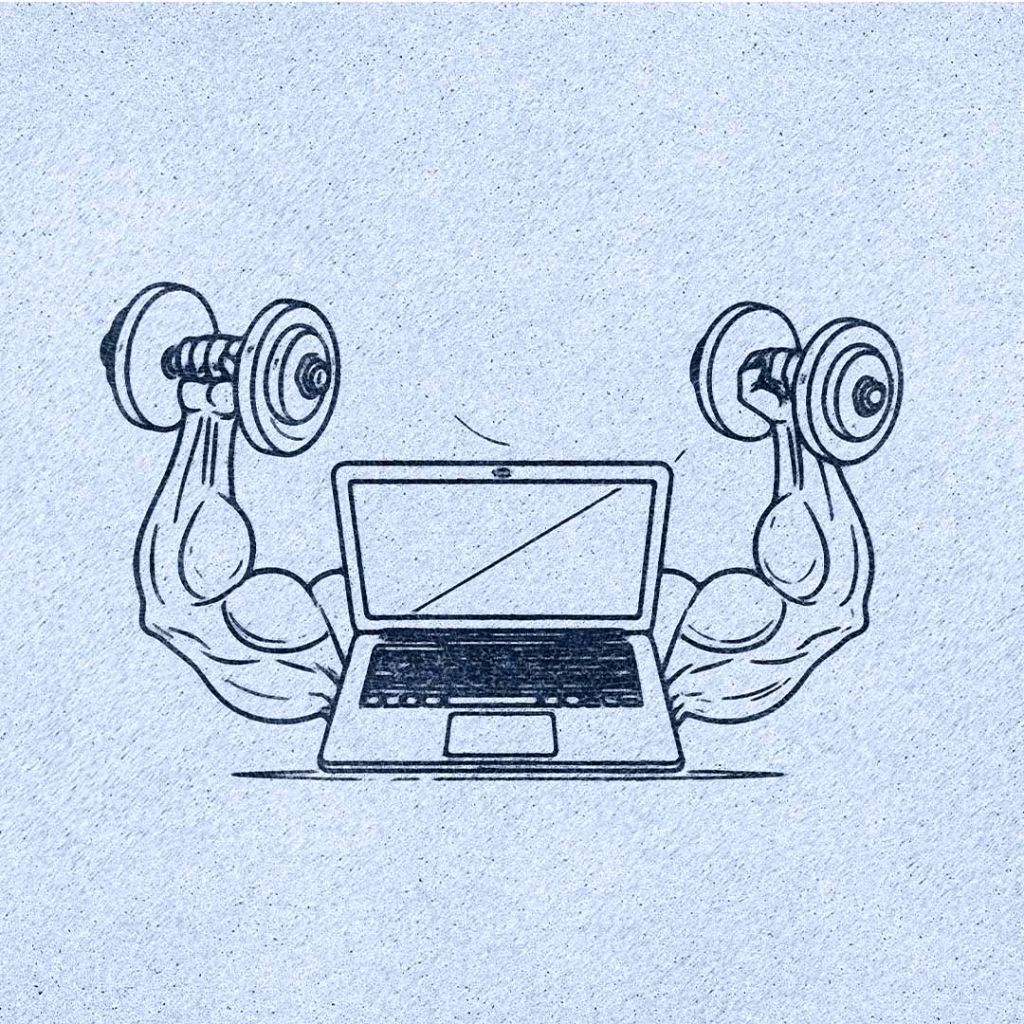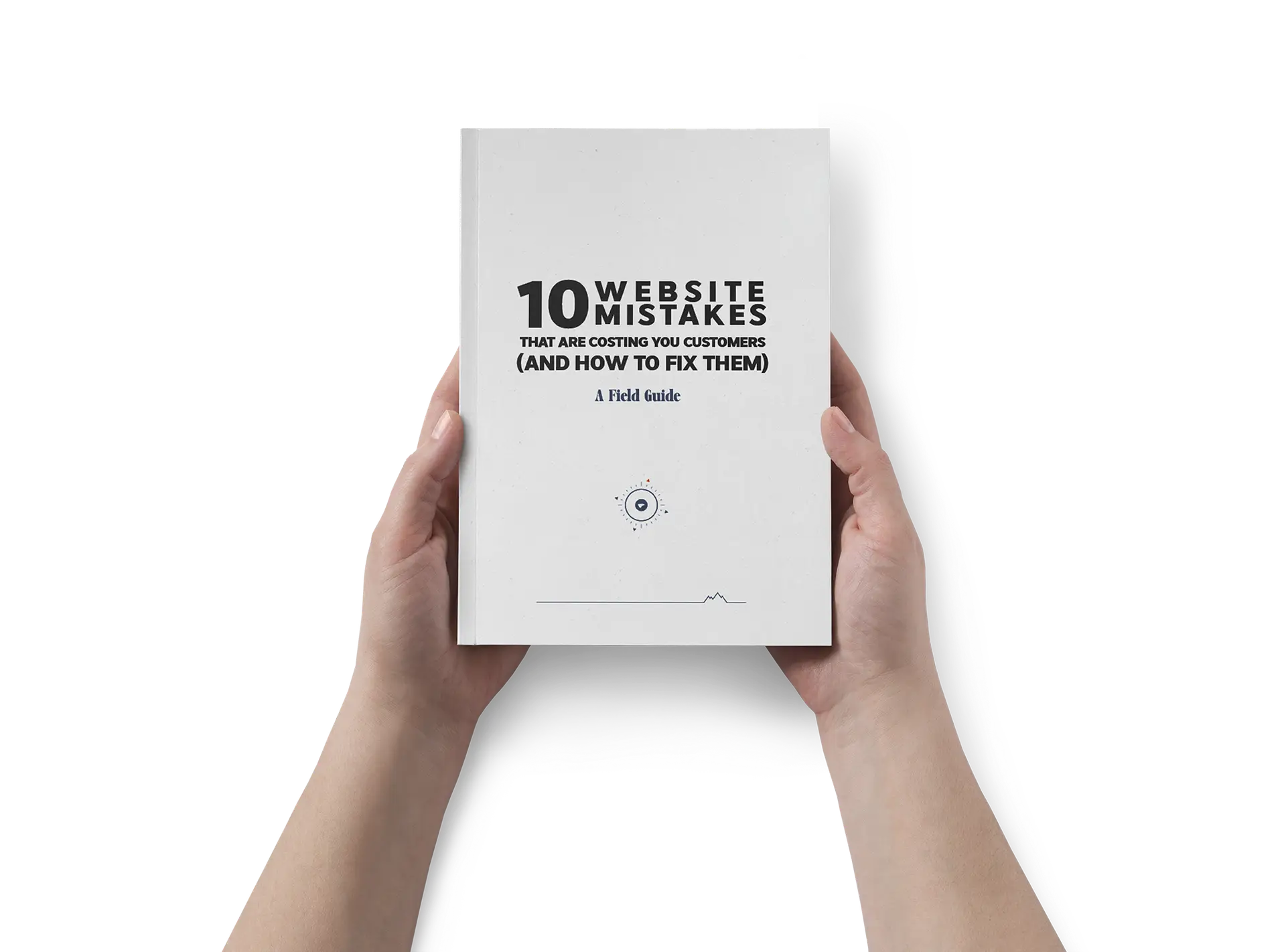TL;DR: The Essentials of Branding and Web Design
Branding and web design work together to build trust, boost credibility, and grow your online presence.
Use StoryBrand to simplify your message and guide customers through their journey.
Strong branding sets you apart, supports UX, and drives word-of-mouth marketing.
Consistency in branding and web design improves recognition across websites, social media, and digital platforms.
Invest in visuals, messaging, and layout to create a user-friendly, on-brand website experience.
Your website is your basecamp. It’s the place where people first meet your business. If they like what they see, they stick around. If not, they’re gone in seconds.
That’s why strong branding and web design matter.
Branding is your story—your values, voice, and look. Web design is how that story is told online. Together, they help customers trust you, connect with you, and buy from you.
This guide will help you build a brand and website that work together like compass and map. Let’s get into it.
The Truth About Branding

Branding isn’t just a logo or color scheme. It’s the feeling people get when they hear your name or see your website.
It’s the full story.
The StoryBrand Framework
Donald Miller, the author of Building a StoryBrand, teaches that:
- The customer is the hero.
- Your brand is the guide.
- You help them solve a problem.
It’s about creating a clear, consistent message that connects emotionally with your customer and guides them toward success.
A clear message helps customers see how you make their life better. Confusing branding? That’s the fast track to losing attention—and trust.
If you confuse, you lose.
What Is the Difference Between Branding and Marketing?

Here’s the simple version:
- Branding is who you are.
- Marketing is how you share that with the world.
Branding shapes your mission, voice, and look. Marketing spreads that message through ads, social media, email, and more.
You need both, but branding comes first.
Go Deeper with our Free Guide – Take the First Step Now
Download our free eBook that uncovers common website pitfalls and how to avoid them.
Why Do You Need Strong Branding for Your Website?

Your website is often the first thing people see. If your brand isn’t strong, your site won’t leave a good impression.
1. Brand Differentiation
Branding helps you stand out from others. In a crowded market, it shows what makes you unique.
2. Credibility and Trustworthiness
People trust brands that look and sound consistent. Branding builds that trust fast.
3. Establish Brand Equity
Good branding makes people remember you. Over time, this grows your brand’s value.
4. Effective Word-of-Mouth Marketing
People share brands they connect with. A clear brand makes it easier for others to talk about you.
5. Brand Consistency
Consistency builds trust. If your website, social media, and email all match, people feel confident in your brand.
Importance of a Strong Brand Identity in Web Design

Brand identity is how your brand looks and feels. It includes colors, logos, tone, and how everything works together.
To Create an Excellent First Impression
People form opinions in seconds. A strong identity helps you make a good one.
To Create Consistency Across All Platforms
Everything should feel connected—your website, socials, packaging, and emails.
To Create a Strong Brand Position
Your design and message should show people where you fit in the market.
To Establish Brand Recall
A consistent brand helps people remember you. That means more returning visitors.
To Provide a Great User Experience
Branding should support the way people move through your site. Clean, simple design helps them find what they need.
What Are the 5 C's of Branding?
To build a strong brand, focus on these:
- Clarity – Say what you do in simple words.
- Consistency – Keep your look and message the same.
- Credibility – Show proof that you deliver.
- Connection – Make people feel something.
- Competitiveness – Show what makes you better.
Go Deeper with our Free Guide – Take the First Step Now
Download our free eBook that uncovers common website pitfalls and how to avoid them.
Key Elements of Effective Branding
Your brand should include:
- Mission and values – What you stand for.
- Personality – Are you fun, bold, serious?
- Voice – How you talk.
- Visual identity – Logo, colors, fonts.
- Messaging – Your key phrases and taglines.
Customer experience – How people feel when they interact with you.
How to Develop a Strong Brand Identity
Here’s a clear path to build your brand:
- Know your mission – Why do you exist?
- Define your values – What guides you?
- Understand your audience – Who do you serve?
- Check your competition – What makes you different?
- Create your visuals – Logo, colors, fonts.
- Build your voice – Choose a tone that fits.
- Write your story – Keep it clear and honest.
- Make a brand guide – Show how to use your brand.
- Apply it everywhere – Website, social, packaging.
- Keep it fresh – Update when needed.
The Role of Color Psychology in Branding and Design
Colors shape emotions. Here’s a quick look:
- Blue = Trust and calm
- Red = Energy and action
- Green = Nature and growth
- Yellow = Cheer and warmth
Pick colors that match your brand’s feeling. Then, use them consistently.
Creating a Cohesive Brand Experience Across Platforms
No matter where people find you—Instagram, email, or your website—it should all feel like “you.”
- Use the same logo, tone, and colors.
- Say the same things in the same way.
- Keep the experience smooth and familiar.
Best Practices for User-Friendly Web Design
- Make it fast – Aim for under 3 seconds to load.
- Keep it simple – Less clutter, more clarity.
- Be mobile-friendly – Most users are on phones.
- Use strong calls-to-action – Make it easy to take the next step.
- Stick with clean design – Give space for your content to shine.
Tools and Resources for Branding and Web Design
Branding Tools
- Tailor Brands – Easy logo and brand tools.
- StoryBrand Workshops – Launch a StoryBrand sales funnel and multiply your sales using our proven marketing framework..
- Shopify Branding Tools – Graphics and content tools.
Web Design Tools
- Figma – Great for wireframes and team design.
- Webflow – Design and build without coding.
- Google Web Designer – Make visual and interactive web content.
Key Considerations for Branding Your Website
1. Visual Design
Use colors, logos, and layout that match your brand.
2. Content
Your words matter. Keep them clear and helpful.
3. Statement
Let people know what you do—and why it matters.
4. Offerings and Pricing
Be honest and clear about what you sell and how much it costs.
5. Social Proof
Show reviews and client stories. People trust other people.
6. Social Media Marketing
Connect your site and socials for a consistent look and feel.
7. Customer Service
Your support should sound and feel like your brand.
What Is Branding in UX Design?
UX means “user experience.” It’s how people feel when using your site.
Branding in UX means:
- Clear layout
- Easy navigation
- Voice and visuals that match your brand
- Helpful calls to action
Good UX builds trust and keeps people coming back.
Case Studies: Successful Branding and Web Design Examples
Discord
Their design is fun, simple, and built for their audience: online communities and gamers.
Mailchimp
Mailchimp uses playful design and easy-to-read content to build trust.
Nike
Their site is bold, clean, and motivating—just like their brand.
PayPal
Their design is sleek and professional, perfect for financial services.
Strong Website Branding and Beyond
Strong branding and web design don’t just help you look good. They help people connect with your business.
When everything works together—your message, your visuals, your design—you don’t just stand out. You become unforgettable.
It’s how your brand looks and feels on your website.
Some do. Others work with brand designers to bring your identity to life online.
It can range from DIY free tools to professional services costing $5,000–$50,000+.
Clarity, consistency, credibility, connection, and competitiveness.
Logo, color palette, fonts, brand voice, and overall visual identity.
It’s how your brand shapes the user’s experience on your site.
Branding is the identity. Design is how it’s visually shown.
It builds trust, attracts the right people, and helps you grow.
Someone who creates your visual and strategic brand identity.
Apple’s clean design, clear messaging, and sleek packaging.
To connect with customers and make your business easy to remember.
It’s the mix of how your brand sounds and how it looks.
Personal, corporate, product, service, and cultural.
Keep Growing • More Dispatches from Basecamp
Struggling to attract clients? Our construction marketing services help contractors, builders, and developers boost leads, increase visibility, and grow revenue.
Discover the essentials of corporate website design, including best practices, top examples, and step-by-step guidance on building a high-performing site.
Learn why website development is crucial for your business. This guide covers everything from choosing a website builder to optimizing for SEO and ensuring long-term success.
Discover the best website builder for small business in 2025. Compare WordPress, Shopify, Wix, Squarespace, and more to find the perfect solution for your needs.
Learn what digital marketing is in simple words. Discover how it connects businesses to online audiences through SEO, social media, and email.
Discover the pros and cons of in-house vs. outsourced social media management. Explore which option is best for your business with insights from EV Agency.









